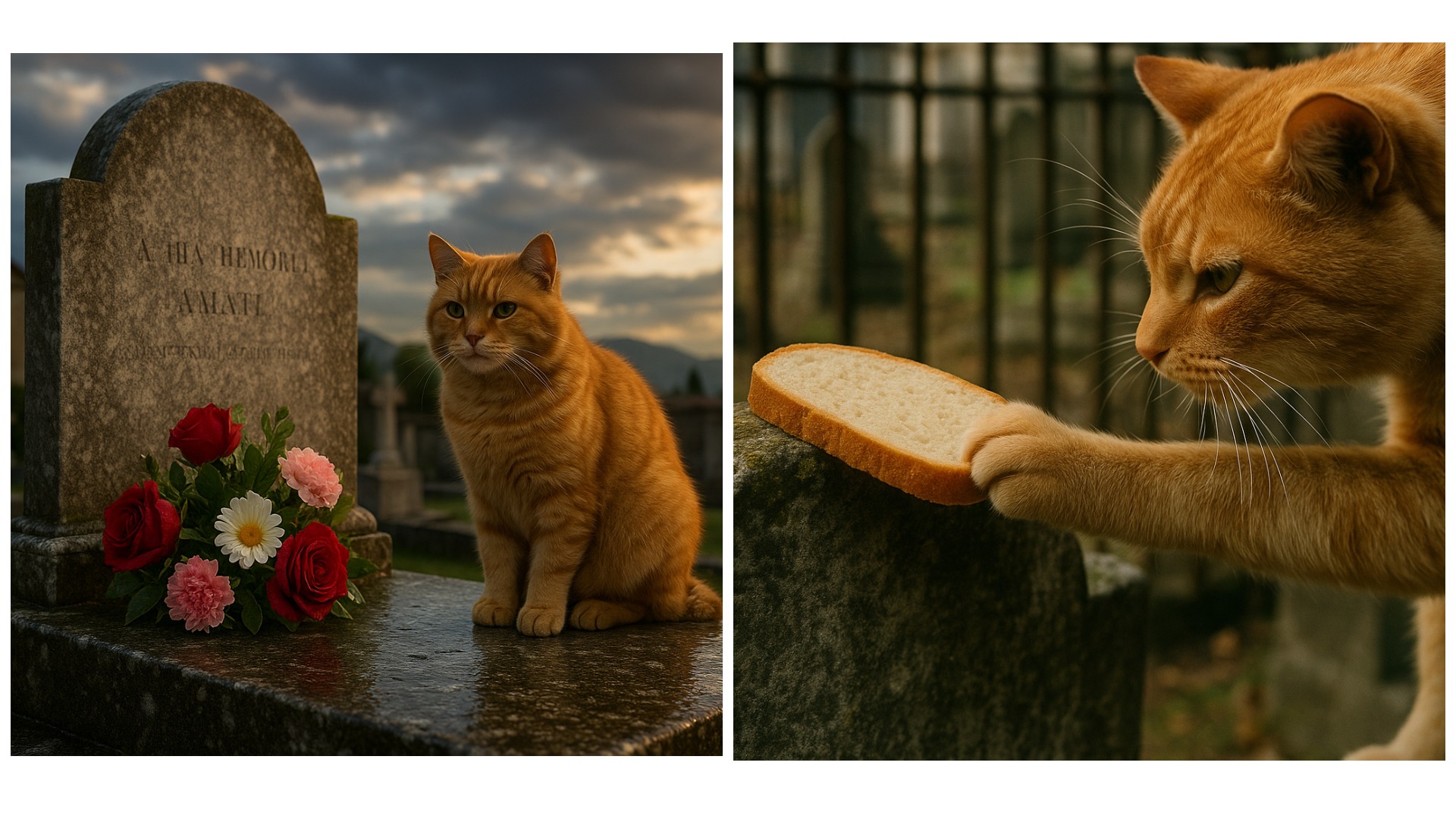The cemetery of Montagnana, a quiet medieval town in northern Italy, became the setting of one of the most unusual animal stories in Europe.
For months, people noticed a ginger tomcat sitting on the same grave every single morning. He wasn’t feral—his fur was well-kept, and he clearly ate somewhere. But his ritual was undeniable.

At first, villagers thought he belonged to the person buried there. The grave belonged to Giovanni Rossi, a local baker who had died during the COVID-19 pandemic. Giovanni was famous in the town for always feeding stray cats from his bakery window.
Every day, this ginger cat brought scraps—bread crusts, pizza toppings, even once a stolen sausage—and placed them on Giovanni’s grave. People described it as a “tiny 911 call from nature itself,” a cat’s way of mourning.

Italian TV channels soon picked up the story. Journalists called it “Italy’s Hachikō,” comparing the cat to Japan’s famous loyal dog. Scientists in shock visited to study feline memory and behavior.
But here comes the shocking twist: when the priest and cemetery workers carefully checked the grave to clean the offerings, they discovered a tiny hole. Inside the soil, beneath Giovanni’s headstone, lived a small family of field mice.

The cat wasn’t just mourning—it was also bringing food as bait. For weeks, he had been using Giovanni’s grave as his personal hunting ground, mixing grief with practicality.
The town didn’t know whether to cry harder or laugh out loud. The idea of a cat “honoring” a kind baker while also setting up the perfect mouse trap became both tragic and hilarious.
In the end, the villagers decided to embrace the humor. They set up a plaque near Giovanni’s grave:
“Here rests Giovanni Rossi, the baker who fed cats. Still feeding them—even from beyond.”

The ginger tom is still spotted there, lounging in the sun, waiting for his next “catch.”
A true story of loyalty, grief, and the shocking twist only nature could invent.

